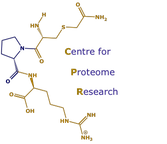Connective tissue proteomics
Thorpe CT, Peffers MJ, Simpson D, Halliwell E, Screen HR, Clegg PD (2016). Anatomical heterogeneity of tendon: Fascicular and interfascicular tendon compartments have distinct proteomic composition. doi: 10.1038/srep20455
Tendon is a simple aligned fibre composite, consisting of collagen-rich fascicles surrounded by a softer interfascicular matrix (IFM). The composition and interactions between these material phases are fundamental in ensuring tissue mechanics meet functional requirements. However the IFM is poorly defined, therefore tendon structure-function relationships are incompletely understood. We hypothesised that the IFM has a more complex proteome, with faster turnover than the fascicular matrix (FM). Using laser-capture microdissection and mass spectrometry, we demonstrate that the IFM contains more proteins, and that many proteins show differential abundance between matrix phases. The IFM contained more protein fragments (neopeptides), indicating greater matrix degradation in this compartment, which may act to maintain healthy tendon structure. Protein abundance did not alter with ageing, but neopeptide numbers decreased in the aged IFM, indicating decreased turnover which may contribute to age-related tendon injury. These data provide important insights into how differences in tendon composition and turnover contribute to tendon structure-function relationships and the effects of ageing.
Tendon is a simple aligned fibre composite, consisting of collagen-rich fascicles surrounded by a softer interfascicular matrix (IFM). The composition and interactions between these material phases are fundamental in ensuring tissue mechanics meet functional requirements. However the IFM is poorly defined, therefore tendon structure-function relationships are incompletely understood. We hypothesised that the IFM has a more complex proteome, with faster turnover than the fascicular matrix (FM). Using laser-capture microdissection and mass spectrometry, we demonstrate that the IFM contains more proteins, and that many proteins show differential abundance between matrix phases. The IFM contained more protein fragments (neopeptides), indicating greater matrix degradation in this compartment, which may act to maintain healthy tendon structure. Protein abundance did not alter with ageing, but neopeptide numbers decreased in the aged IFM, indicating decreased turnover which may contribute to age-related tendon injury. These data provide important insights into how differences in tendon composition and turnover contribute to tendon structure-function relationships and the effects of ageing.
